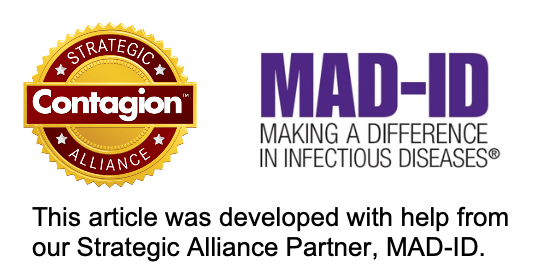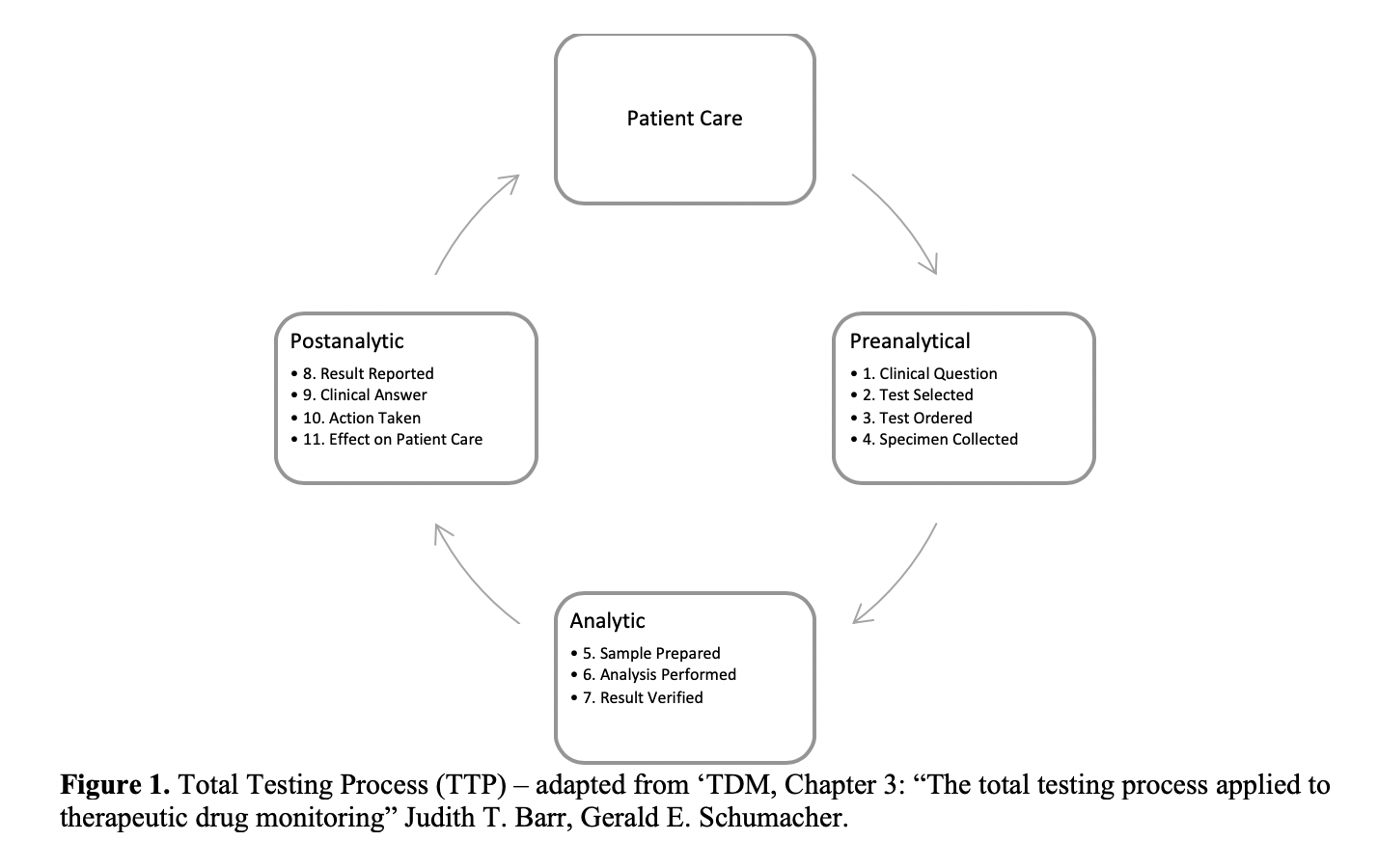Individualized Beta-Lactam Therapy and Monitoring
Elevated beta-lactam concentrations have been associated with neurotoxic adverse effects, including seizures and mental status changes.

Individualizing antibiotic therapy based on measured serum concentrations is not a novel concept. Therapeutic drug monitoring (TDM) has been utilized for decades to optimize doses for many drugs including aminoglycosides, vancomycin, and voriconazole. Traditionally, the focus of performing TDM has been to limit toxicity rather than to maximize efficacy. Most TDM drug candidates display one or more characteristics listed in Table 1.1 For many years, beta-lactam antibiotics were considered to have a wide therapeutic window. However, within the past decade, this premise has been challenged by increased reports of toxicity secondary to supratherapeutic concentrations and reduced efficacy in the face of resistance and subtherapeutic concentrations. Thankfully, with the increased availability of liquid chromatography with tandem mass spectrometry (LC MS/MS) technology, more research is being done on beta lactam TDM and improving outcomes. Larger, more robust studies are still needed to more clearly define the optimal therapeutic window for beta-lactams.
Elevated beta-lactam concentrations have been associated with neurotoxic adverse effects, including seizures and mental status changes.2,3,4 Recently, cefepime has been most common beta-lactam reported to cause neurotoxicity, but other beta-lactams have been implicated.5,6 Several studies have attempted to define neurotoxicity thresholds via trough concentrations, but results have varied widely.7,8,9 Additionally, these studies only examined trough concentrations (Cmin). Single trough concentrations do not accurately predict total antibiotic exposure. Further studies are needed to better define if beta-lactam neurotoxicity is concentration dependent (Cmax) or total exposure dependent (area-under-the curve, AUC).
When treating multidrug-resistant organisms, there is also increasing concern for subtherapeutic beta-lactam concentrations, especially in the critically ill.10 Patients treated in the ICU setting frequently exhibit dramatic pharmacokinetic changes that put them at higher risk for having supra- or sub-therapeutic antibiotic exposure. These factors may include augmented or reduced renal function, renal replacement therapy, extracorporeal membrane oxygenation (ECMO), or surgery among many others. As a result, optimal dosing of antibiotics in these patients is challenging. Effective treatment of these infections requires dosing strategies that adequate exposure to optimize bacterial killing while minimizing risk for toxicity.

A current challenge in beta-lactam monitoring is determining what the desirable exposure is for positive clinical outcomes. Various beta-lactam pharmacodynamic (PD) targets have been proposed. Traditionally concentrations above the minimum inhibitory concentration (MIC) for 40-70% (depending on subgroup) of the dosing interval were considered adequate for maximal bacterial killing. More aggressive targets including 100% time above the MIC and 4-6X the MIC for 100% (resistance suppression target) of the dosing interval have been proposed based on animal models and have begun to be investigated clinically.11,12
When monitoring a patient’s beta-lactam therapy, various clinical factors influence the PD target sought, including the resistance profile of the organism and the site of infection. Patient specific factors to consider are patient age, renal function and projected duration of therapy. In some cases, reaching the proposed resistance suppression target may be warranted.
To adequately describe a patient’s pharmacokinetics, a minimum of two samples are required to accurately describe a patient’s volume of distribution and clearance. Together, these factors describe total exposure to the antibiotic, which is critical to making dosing adjustments. Without the development of a Bayesian model (preferably with rich sampling), trough samples on their own reveal very little information regarding total exposure, since a wide variety of AUCs can be observed with similar trough values. Dosing decisions based on single trough samples require an unacceptable amount of guesswork and should be avoided.
In the case of suboptimal beta-lactam concentrations, prolonged infusions can be a strategy to increase the Cmin while also decreasing the Cmax. Multiple studies have examined the clinical benefits of prolonged infusion strategies and have been recently reviewed.13,14 If administering a prolonged infusion is not feasible, shortening the dosing interval could be an alternative. If higher than typical concentrations are observed, it is important to confirm that the value reported is not outside the laboratory’s validated assay range. Samples drawn from improperly flushed lines also can lead to falsely elevated concentrations. If the supratherapeutic value is determined to be accurate, the patient should be carefully monitored for signs of adverse effects. Dose-reduction, increased doing interval, or discontinuation of the drug may be warranted.
Beta-lactam TDM is becoming more widely available and should be routinely utilized to safely and effectively dose beta lactams, particularly in critically ill patients. Barriers to more widespread incorporation into clinical practice include longer turn-around-time (versus immunoassays) and robust clinical data describing TDM-guided therapy.
Most studies to date have examined extent of PK/PD target attainment with various beta-lactam antibiotics, primarily in critically ill patient populations. A selection of larger studies examining beta-lactam TDM and/or infusion strategies is summarized in Table 2. Large, robust clinical studies explicitly demonstrating improved clinical outcomes with TDM are still needed. Currently ongoing, the DOLPHIN and TARGET studies aim to examine the impact of beta lactam TDM on clinical outcomes.
Because of the potential for further drug resistance, TDM can be incorporated as an antimicrobial stewardship tool to block this development. In the end, if the source of infection cannot be controlled and the clinician is relying on drug therapy to cure the patient, it is in the best interest of the patient to control drug exposure using TDM.
References:
- Sime, F.B., Roberts, M.S., Peake, S.L. et al. Does Beta-lactam Pharmacokinetic Variability in Critically Ill Patients Justify Therapeutic Drug Monitoring? A Systematic Review. Ann. Intensive Care. 2012; 2(35).
- Imani S, Buscher H, Marriott D, Gentili S, Sandaradura I. Too much of a good thing: a retrospective study of β-lactam concentration—toxicity relationships. J Antimicrob Chemother. 2017;72(10):2891-2897.
- Durand-Maugard C, Lemaire-Hurtel A-S, Gras-Champel V, et al. Blood and CSF monitoring of cefepime-induced neurotoxicity: nine case reports. J Antimicrob Chemother. 2012;67(5):1297-1299.
- Chatellier D, Jourdain M, Mangalaboyi J, et al. Cefepime-induced neurotoxicity: an underestimated complication of antibiotherapy in patients with acute renal failure. Intensive Care Med. 2002;28(2):214-217.
- Quinton M-C, Bodeau S, Kontar L, et al. Neurotoxic Concentration of Piperacillin during Continuous Infusion in Critically Ill Patients. Antimicrob Agents and Chemother. 2017;61(9).
- Grill MF, Maganti R. Cephalosporin-Induced Neurotoxicity: Clinical Manifestations, Potential Pathogenic Mechanisms, and the Role of Electroencephalographic Monitoring. Ann Pharmacother. 2008;42(12):1843-1850.
- Lau C, Marriott D, Gould M, Andresen D, Reuter SE, Penm J. A retrospective study to determine the cefepime-induced neurotoxicity threshold in hospitalized patients. J Antimicrob Chemother. November 2019.
- Boschung-Pasquier L, Atkinson A, Kastner L, et al. Cefepime neurotoxicity: thresholds and risk factors. A retrospective cohort study. Clin Microbiol Infect. July 2019.
- Huwyler T, Lenggenhager L, Abbas M, et al. Cefepime plasma concentrations and clinical toxicity: a retrospective cohort study. Clil Microbiol Infect. 2017;23(7):454-459.
- Taccone FS, Laterre P-F, Dugernier T, et al. Insufficient β-lactam concentrations in the early phase of severe sepsis and septic shock. Crit Care. 2010;14(4).
- Sumi CD, Heffernan AJ, Lipman J, Roberts JA, Sime FB. What Antibiotic Exposures Are Required to Suppress the Emergence of Resistance for Gram-Negative Bacteria? A Systematic Review. Clin Pharmacokinet. 2019;58(11):1407-1443.
- Wong G, Taccone F, Villois P, et al. β-Lactam pharmacodynamics in Gram-negative bloodstream infections in the critically ill. J Antimicrol Chemother. October 2019.
- Rhodes NJ, Liu J, O’Donnell JN, et al. Prolonged Infusion Piperacillin-Tazobactam Decreases Mortality and Improves Outcomes in Severely Ill Patients. Crit Care Med. 2018;46(2):236-243.
- Vardakas KZ, Voulgaris GL, Maliaros A, Samonis G, Falagas ME. Prolonged versus short-term intravenous infusion of antipseudomonal β-lactams for patients with sepsis: a systematic review and meta-analysis of randomised trials. Lancet Infect Dis. 2018;18(1):108-120.
